Circuit diagram:
Tuesday, April 30, 2013
Electric Guitar Violin Preamplifier

IC1a is configured as a non-inverting amplifier with a gain of between 2 and 20, depending on the setting of VR1. IC1a’s output is fed to VR2 via a 22µF capacitor, allowing the output volume to be set. The audio then passes to the non-inverting inputs of the remaining three op amps (IC1b-IC1d) which are connected in parallel to provide a low output impedance; it will drive a load impedance as low as 600Ω. The 100Ω resistors in series with the outputs provide short-circuit protection for the op amps and also prevent large currents from flowing between the outputs in case they have slightly different offset voltages.
The buffered signal is then AC-coupled to two output connectors using 47µF electrolytic capacitors. For Output 1, a 47kΩ resistor sets the output DC level to ground and a 220Ω series resistor provides further short-circuit protection. Output 2 is similar but includes another potentiometer (VR3) to allow its level to be set individually. Note that this means the impedance of Output 2 can be high (up to 2.5kΩ depending on the position of VR3’s wiper). The total harmonic distortion of this circuit is typically less than 0.01% with the gain set to six. If a TL064 is used instead of a TL074, the current drain will decrease but there will be more noise at the output. Finally, the input imped
Friday, April 26, 2013
Arduino Based Capacitive Touch Screen
Building a touch sensing capability can help in providing communication between the microcontroller and the tablet. Capacitive touch screens function by sensing the capacitance changes on the screen. In this case, a large conductive brass plate is used to simulate touch. The surface area of the conductor used here to simulate the touch sould be large.
Testing can be done by touching the scrren with a wire and holding the other end. This may not work. This is made to work by sticking a piece of aluminum foil on to the screen and connecting the free end to the pin that is available on the arduino. The video shows the working of the capacitive touch screen. The setup is quite fragile and a little more circuitry could improve its reliability. Thus the capacitive touch screen is done.
Sunday, April 21, 2013
SP Semi Automatic Paintbrush
Any work of art are often copied using this and therefore the elements that are needed to form this is often listed below:
IR camera
InkShield
Ink cartridge
IR LED.
The software thats run on a desktop for this purpose is understood as paintbrush.py. The software plays the role of mapping the camera focus with the co-ordinate system of the canvas. Four LEDs are placed at every corner of the canvas and therefore the mapping is calibrated by hitting a key when needed.
The region of the image is captured by tracking the motion of the LEDs. the mandatory commands are send to an Arduino with the InkShield by means that of a script written for this purpose. The script tells the arduino that nozzle to fireplace and additionally the grey level that must be achieved by the firing nozzle. so as to avoid flooding, the painted areas are tracked.
Thats all its. The paintbrush is complete. this is often a lot of of a fun-based project and may be tired some spare time using the elements mentioned earlier. the desired script is out there on github. The InkShield library employed by the
SP Network Voltage Indicator
during this state of affairs, theres a sufficiently giant potential distinction across the buzzer and D5s to see that these 2 components to point AC power loss, each audible and visual. By pressing the reset button current is interrupted by Th1, therefore thyristor enter in blocking state and therefore the different terminal of the buzzer is connected to ground.
Saturday, April 13, 2013
Sensitive Audio Power Meter
Circuit diagram:
Installtrailer Light Taillight Converter Towing

Looking To The Rear For The Trailer Plug The Pins Are Reversed And.

Trailer Wiring Diagram Light Plug Brakes Hitch 4 Pin Way Wire Brake.

Trailer Light Wiring Typical Trailer Light Wiring Diagram.

Trailer Parts Depot Trailer Wiring Kits Trailer Parts.
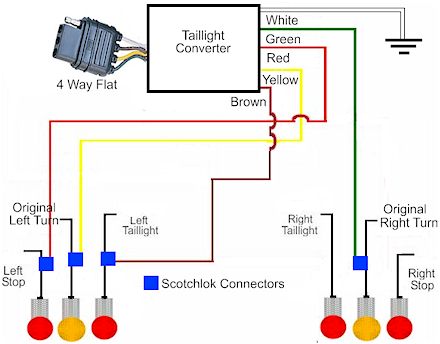
How To Install A Trailer Light Taillight Converter In Your Towing.
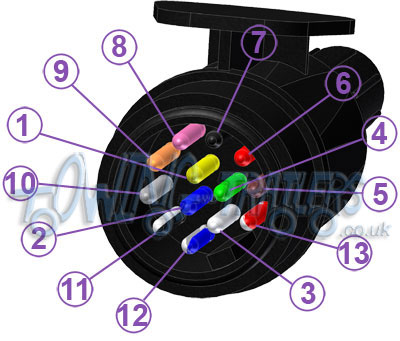
Wiring For 13 Pin Euro Plugs Sockets For Trailers Caravans Uk.

Trailer Wiring Diagram.

Wiring Color For 7 Pin Trailer Plug Jpg.
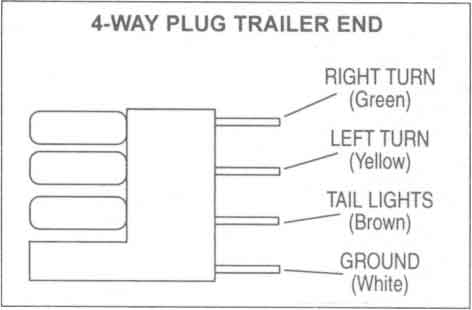
Trailer Wiring Diagrams Johnson Trailer Sales Colfax Wisconsin.

12s Wiring Diagram.
Friday, April 12, 2013
Luggage Protector Circuit Using 555 Timer IC
IC. The alarm will rise highly when the thin wire is cut off by the
thief. The circuit configuration using 555 timer IC acts as a astable multivibrator which produce signal tone of frequency of about 1 KHz and produce sound like a shrill noise away the output speaker.

5number pin is directly connected to the power supply. 10k, 68k
resistor and 0.01uf capacitor are connected to generate specific range of frequency
like as 1KHz. You can change output frequency by changing the value of
resistor and capacitor. Pin 1 is directly connected to the ground.
Output is taken from pin 3. A 8Ohms speaker is connected to the output
for alarm sound. Thin wire is connected as shown in figure.
wire would be very thin copper like 36 SWG or higher. You can use one
gage of normal wire. The driving voltage of the circuit is 5 Volt to 12
Volt.
Subwoofer Wiring Diagrams Dual Voice Coilspeaker

Subwoofer Wiring Diagrams Four 4 Ohm Dual Voice Coil Dvc Speakers.
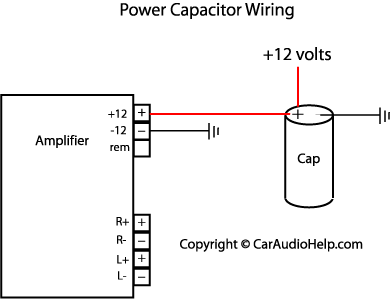
Car Audio Capacitor Installation.

Wiring Diagram 2001 Honda Civic Stereo Wiring Diagram Related Posts.

Car Stereo Head Unit Wiring Harness.

Subwoofer Wiring Diagrams One 2 Ohm Dual Voice Coil Dvc Speaker.

Dual Voice Coil Wiring Driver By Stereo Integrity Circuit Schematic.
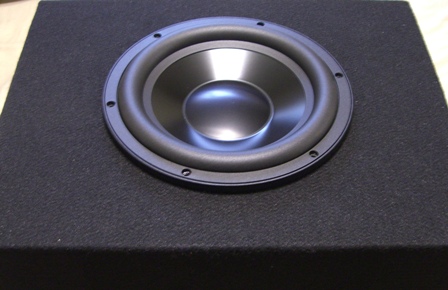
Mr2 Subwoofer Enclosure Combo Mr2 Subwoofer Enclosure Combo.
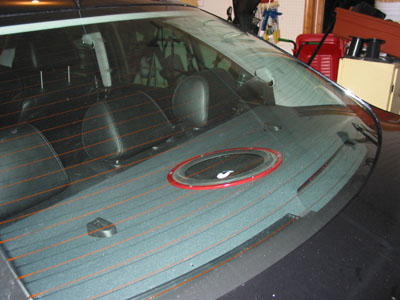
Subwoofer Installation Details.

Infinity Subwoofer Box Kenwood Class D Amplifier Wiring Kit.

Kfc W112s Kac 6104 Box Amp Kit Kenwood 12 800 Watt Subwoofer.
Mobile Incoming Call Indicator Circuit Diagram
when you are at home. This circuit will give a visual indication if
placed near a mobile phone even if the ringer is deactivated.

When
a call is coming to the mobile phone, the transmitter inside it becomes
activated. The frequency of the transmitter is around 900MHz.The
coil L1 picks up these oscillations by induction and feds it to the
base of Q1. This makes the transistor Q1 activated.Since the Collector
of Q1 is connected to the pin 2 of IC1 (NE555) , the IC1 is triggered to make the LED connected at its output pin (pin 3) to blink. The blinking of the LED is the indication of incoming call.
Notes:
-
The coil L1 can be made by making 150 turns of 36 SWG enameled copper
wire on a 5mm dia plastic former.Or you can purchase a 10 uH coil from
shop if available. - The circuit can be powered from a 6V battery.
- Assemble the circuit on a good quality PCB.
- C1 & C3 are to be polyester capacitors.
- The electrolytic capacitor C2 must be rated 10V.
Hoppy Vehicle Wiring 11140475 Hoppy Vehicle Wiring 43315

Car Alarm Wire Harness Auto 2003 Oem Number Auto 2003 Dongguan.

Automotive Wiring Harness Automotive Wiring Harness For Seating.

Hoppy Vehicle Wiring Kit 11140475 Hoppy Vehicle Wiring Kit 43315.
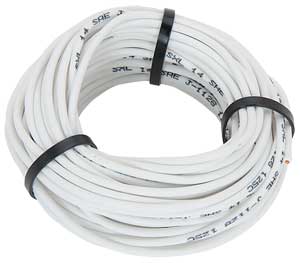
Jegs Performance Products 10857 Jegs Premium Automotive Wire.

Automotive Wiring Harness 2.

Of 1995 1996 Ford Windstar Into Car Wire Harness Part Cf Whfd2.
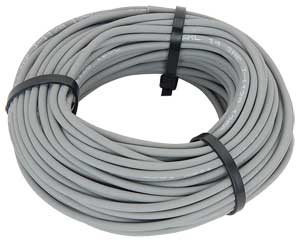
Jegs Performance Products 10806 Jegs Premium Automotive Wire.

Ignition Wire Boots China Manufacturer Car Parts Components.

Http Www Vehicle Wiring Products E Oto 192175 Jpg.

Automotive Innovation Inc Automotive Innovation Inc Manufacturers In.
Thursday, April 11, 2013
Moduler Audio Preamplifier

R1_____________1K5 1/4W Resistor
R2_____________220K 1/4W Resistor
R3_____________18K 1/4W Resistor
R4_____________330R 1/4W Resistor
R5_____________39K 1/4W Resistor
R6_____________56R 1/4W Resistor
R7,R10_________10K 1/4W Resistors
R8_____________33K 1/4W Resistor
R9_____________150R 1/4W Resistor
R11____________ 6K8 1/4W Resistor
R12,R13________100R 1/4W Resistors
R14____________100K 1/4W Resistor
C1_____________220nF 63V Polyester Capacitor
C2_____________220pF 63V Polystyrene or ceramic Capacitor
C3_____________1nF 63V Polyester or ceramic Capacitor
C4,C7__________47µF 50V Electrolytic Capacitors
C5,C6__________100µF 50V Electrolytic Capacitors
Q1,Q2__________BC550C 45V 100mA Low noise High gain NPN Transistors
Q3_____________BC556 65V 100mA PNP Transistor
Q4_____________BC546 65V 100mA NPN Transistor

R1,R7___________47K 1/4W Resistors
R2_____________220K 1/4W Resistor
R3______________18K 1/4W Resistor
R4_____________330R 1/4W Resistor
R5______________39K 1/4W Resistor
R6______________56R 1/4W Resistor
R8_____________150R 1/4W Resistor
R9______________10K 1/4W Resistor
R10,R16__________6K8 1/4W Resistors
R11,R12________100R 1/4W Resistors
R13____________100K 1/4W Resistor
R14______________1K5 1/4W Resistor
R15,R21,R22______4K7 1/4W Resistors
R17,R24,R26______8K2 1/4W Resistors
R18______________3K3 1/4W Resistor
R19______________1K 1/4W Resistor
R20____________470R 1/4W Resistor
R23,R25_________12K 1/4W Resistors
R27,R28__________4K7 1/4W Resistors
C1_____________220nF 63V Polyester Capacitor
C2_______________1nF 63V Polyester or ceramic Capacitor
C3,C6___________47µF 50V Electrolytic Capacitors
C4,C5__________100µF 50V Electrolytic Capacitors
C7______________10nF 63V Polyester Capacitor
C8,C9__________100nF 63V Polyester Capacitors
Q1,Q2_________BC550C 45V 100mA Low noise High gain NPN Transistors
Q3____________BC556 65V 100mA PNP Transistor
Q4____________BC546 65V 100mA NPN Transistor
SW1,SW2_______2 poles 6 ways Rotary Switches
Simpler, alternative Tone Control parts:
P1______________22K Linear Potentiometer
P2______________47K Linear Potentiometer
R29,R30________470R 1/4W Resistors
R31,R32__________4K7 1/4W Resistors
C10_____________10nF 63V Polyester Capacitor
C11,C12________100nF 63V Polyester Capacitors
Power supply:
Technical data:
- Main Module Input sensitivity:
- 250mV RMS for 1V RMS output
- Tone Control Module Input sensitivity:
- 1V RMS for 1V RMS output
- Maximum output voltage:
- 13.4V RMS into 100K load, 11.3V RMS into 22K load, 8.8V RMS into 10K load
- Frequency response:
- flat from 20Hz to 20KHz
- Total harmonic distortion @ 1KHz:
- 1V RMS 0.002% 5V RMS 0.003% 7V RMS 0.003%
- Total harmonic distortion @10KHz:
- 1V RMS 0.003% 5V RMS 0.008% 7V RMS 0.01%
Simple Smoggy
Simple Smoggy Circuit diagram:

- Use only ‘good old’ germanium diodes for D1 and D2. Sensitivity will be much reduced if silicon diodes are used, as these have a higher threshold voltage.
- Smoggy does not provide an absolute indi-cation of field strength and even more so can-not provide any guidance whether anything it detects might be harmful. Its function is to detect electromagnetic signals and compare their relative magnitude.
Constructing your own Dual Power Supply Rise
Note that the + & - regulators do not must be matched: you can for example, use a +5v & -9V pair. However,the positive regulator must be a 78xx regulator, & the negative a 79xx. They have built in plenty of safety in to this project so it ought to give plenty of years of continuous service.
This Dual Power Supply design makes use of a full wave bridge rectifier coupled with a centre-tapped transformer. A transformer with a power output rated at at least 7VA ought to be used. The 7VA rating means that the maximum current which can be delivered without overheating will be around 390mA for the 9V+9V tap; 290mA for the 12V+12V and 230mA for the 15V+15V. If the transformer is rated by output RMS-current then the worth ought to be divided by one.2 to get the current which can be supplied. For example, in this case a 1A RMS can deliver 1/(one.2) or 830mA.
The purpose of the filter capacitor is to smooth out the ripple in the rectified AC voltage. Theres dual amount of ripple is determined by the worth of the filer capacitor: the larger the worth the smaller the ripple.The two,200uF is an appropriate value for all the voltages generated using this project. The other consideration in choosing the correct capacitor is its voltage rating. The working voltage of the capacitor has to be greater than the peak output voltage of the rectifier. For an 18V supply the peak output voltage is one.4 x 18V, or 25V. So they have selected a 35V rated capacitor.


Phone busy pointer circuits
 |
| Phone busy pointer circuits |
Room Noise Detector Schematic Circuit
Circuit diagram :
Parts List :
R1____________10K 1/4W Resistor
R2,R3_________22K 1/4W Resistors
R4___________100K 1/4W Resistor
R5,R9,R10_____56K 1/4W Resistors
R6_____________5K6 1/4W Resistor
R7___________560R 1/4W Resistor
R8_____________2K2 1/4W Resistor
R11____________1K 1/4W Resistor
R12___________33K 1/4W Resistor
R13__________330R 1/4W Resistor
C1___________100nF 63V Polyester Capacitor
C2____________10µF 25V Electrolytic Capacitor
C3___________470µF 25V Electrolytic Capacitor
C4____________47µF 25V Electrolytic Capacitor
D1_____________5mm. Red LED
IC1__________LM358 Low Power Dual Op-amp
Q1___________BC327 45V 800mA PNP Transistor
MIC1_________Miniature electret microphone
SW1__________2 poles 4 ways rotary switch
B1___________9V PP3 Battery
Clip for PP3 Battery
Use :
- Place the small box containing the circuit in the room where you intend to measure ambient noise.
- The 50 dB setting is provided to monitor the noise in the bedroom at night. If the LED is steady on, or flashes bright often, then your bedroom is inadequate and too noisy for sleep.
- The 70 dB setting is for living-rooms. If this level is often exceeded during the day, your apartment is rather uncomfortable.
- If noise level is constantly over 85 dB, 8 hours a day, then you are living in a dangerous environment.
Source by : Streampowers
Wednesday, April 10, 2013
Simple Mat Switch Circuit
The circuit uses a conductive foam as the switch. It can be two small pieces of conductive pads usually used to pack sensitive ICs as antistatic cover. Alternatively, you can make the switch by coating conducting carbon ink on two small pieces of a copper-clad board.
Circuit diagram :

IC1 outputs a pulse of fifty-seconds duration with preset values of R4 and C3. This pulse is applied to the buzzer through transistor T2. The buzzer sounds a warning beep on unauthorised entry. The pulse duration can be changed to the desired value by changing the values of R4 and C3. Resistor R2 in the circuit makes the trigger pin of IC1 high to prevent false triggering.
Assemble the circuit on a general-purpose PCB and enclose in a plastic case. Use a 9V battery to power the circuit. Connect the touchpad switch with the PCB and hide under the mat at the entrance. The PCB can be mounted on the nearby wall.
Make the switch carefully using conducting foam or copper clad coated with conducting ink. Place the two pieces with their conducting surface facing each other. Solder carefully a thin copper electric wire and ensure that it makes contact when the two plates touch together on pressing. Provide two 1cm rubber tabs between the plates to avoid touch in the standby mode.
Input Impedance Booster Circuit
Circuit diagram:
5V 2A Dc Converter Using LT3980
5V 2A Dc Converter Circuit Diagram

The LT3980 has an adjustable frequency from 100kHz to 2.4MHz and accepts input voltages up to 58V . The transient voltage of the LT3980 is around 80 volts . The maximum output current which can be delivered by the LT3980 monolithic buck switching regulator is around 2 Amps .
Main features of the LT3980 monolithic buck switching regulator are : wide input range from 3.6V to 58V , overvoltage lockout protects circuits through 80V transients , 2A Maximum Output Current , low ripple (<15mVP-P) Burst Mode, aAdjustable switching frequency: 100kHz to 2.4MHz ,low shutdown current: IQ < 1μA, thermal protection, Soft-Start Capability . Link
Egg Timer Circuit
This is a simple egg timer circuit , which is both simple and functional, shows once again that it is not essential to use a microcontroller for everything these days. The circuit consists of only two ICs from the standard 4000 logic family, a multi-position rotary switch and a few individual components. The combination of a 4040 oscillator/counter and a 4017 decimal counter is certainly not new, but it is an ideal combination for timers that are required to generate long intervals that can be programmed in steps. The circuit can be directly powered from a 9-V battery, without using a voltage regulator. The signalling device is a 12-V buzzer, which generally works quite well even at a much lower voltage. We won’t explain the operation of the two ICs here; if you would like to know more about this, we recommend consulting the device data sheets.
The RC configuration has been selected for the oscillator circuit of the 4060, since the frequencies of standard crystals and resonators would be too high (even 32.768 Hz is much too high), making it impossible to achieve the desired times. With an RC oscillator, it’s also easier to modify the times to suit our purposes. For instance, if the oscillator frequency is reduced by a factor of two, we obtain a range of 1 to 16 minutes in steps of 1 minute. The range is split into two by taking advantage of the fact that the 4017 has an AND gate at its input (with an inverted input).The two ranges overlap by two steps. The oscillator has been dimensioned such that the 23 divider output (pin 14) has a period of 30 seconds, so IC2 receives a clock pulse every 30 seconds. This means that the oscillator frequency must be set to 8.5333 Hz.

The first output of IC2 is active after a reset, so it cannot be used. If S1 is in position I, pin 14 of IC2 is connected to the positive supply line. This input is used as an enable input. Directly after the first pulse from the 4060, the second output of IC2 goes high (which means after exactly half a minute). The sub-sequent outputs become active in turn at intervals of one clock pulse, and thus generate the states for 1 to 4.5 minutes. In the second range (II) of S1, the ‘enable’ pin of IC2 is connected to the 212 divider output of the 4060 (pin 1). This output goes high 4 minutes after the reset (which is why it is labelled ‘240 s’, instead of the period time of 480 s). Since the 4060 is an asynchronous counter, this output goes high a short time after the 23 output goes low. This delay provides the proper condition for an extra clock pulse for the 4017. The outputs of the 4017 will thus count upwards once. This means that the second output will become active after 4 minutes, with the rest of the outputs becoming active after 4.5 to 8 minutes. The desired timing interval is selected using switch S2.

The output of S2 is connected directly to emitter follower T1, which energizes the buzzer when the level on the wiper of the switch is high. At the same time, the counter of IC1 is disabled via diode D1 by forcing the oscillator input high. The buzzer thus remains active until the circuit is switched off. The first counter output of the 4060 is connected to an LED (D2), which indicates that the circuit is active and the battery not yet exhausted. The blinking rate is approximately 0.5 Hz. The current through the LED is set to a modest 1mA, since this current represents the majority of the current drawn by the circuit.
This ranges from 0.5 to 1.5 mA, with the average current consumption being approximately 1mA while the timer is running. The buzzer used in our prototype increases the current to around 13 mA when it is energized, but this naturally depends on the actual type used. In principle, the circuit will work with any supply voltage between 3 and 16 V. However, the actual supply voltage should be taken into account in selecting the buzzer. The value of the supply voltage also has a small effect on the time interval, but in practice, the deviation proved to be less than 5 percent - which is not likely to matter too much to the eggs.


